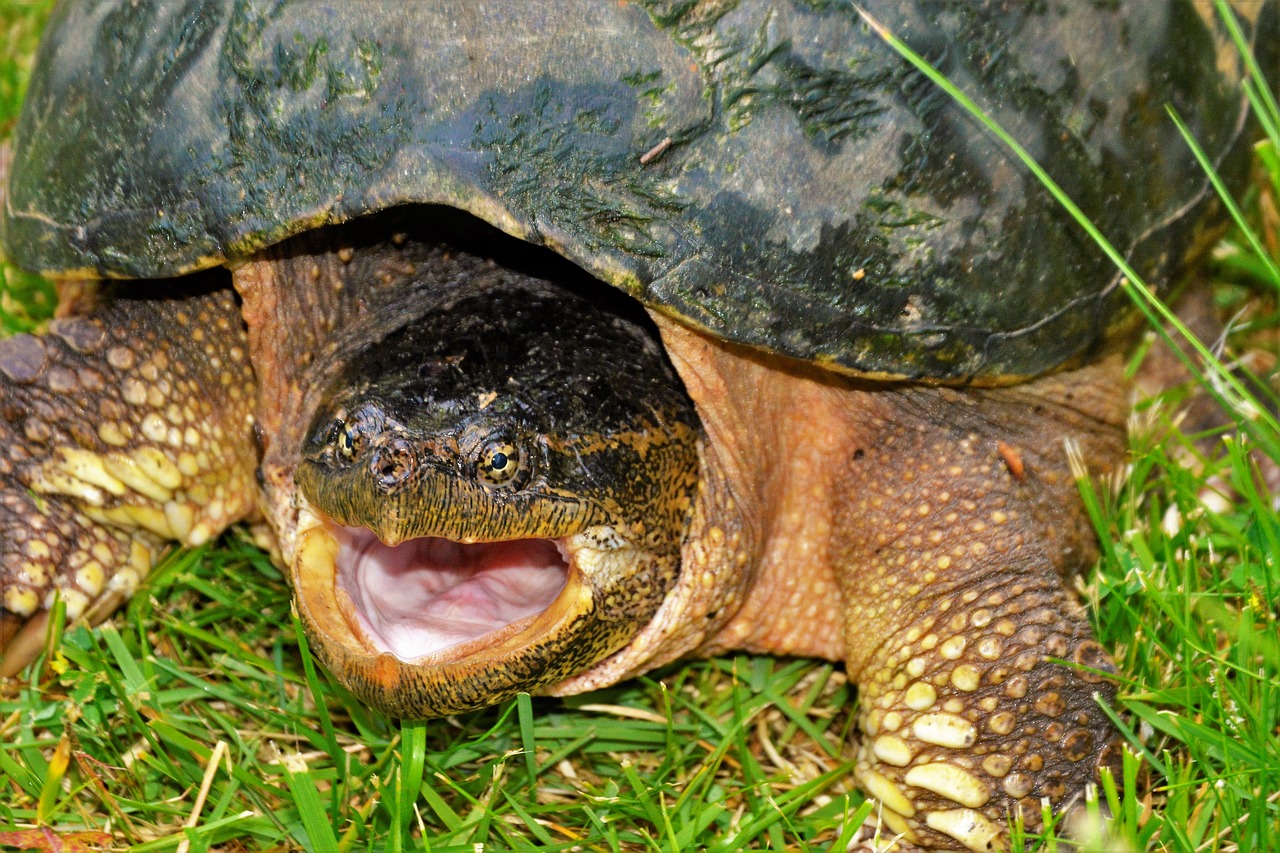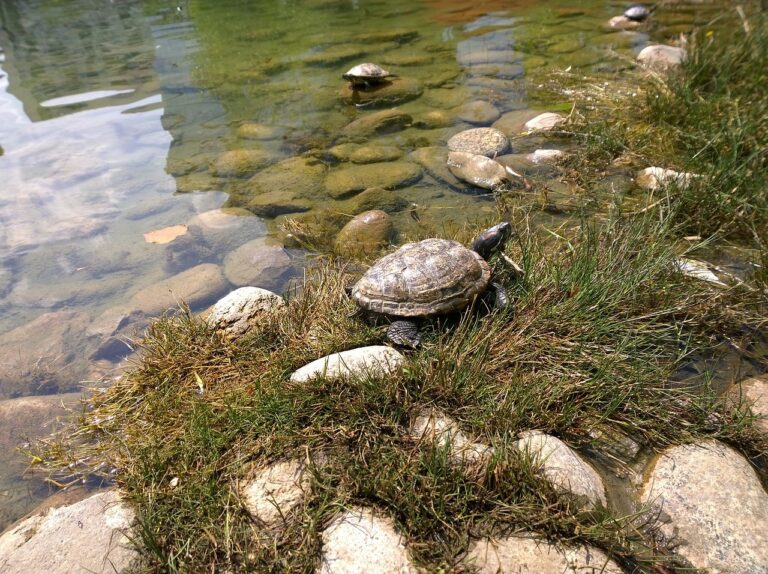Introduction
Alligator snapping turtles (Macrochelys temminckii) are remarkable creatures that have captured the fascination of many. With their prehistoric appearance and astonishing adaptations, these turtles are truly one of nature’s marvels. In this blog post, we will delve deep into the world of alligator snapping turtles, exploring their habitat, behaviors, and conservation efforts, and providing expert advice for those who might encounter these magnificent reptiles in the wild. Source smithsonian
Anatomy and Characteristics
Formidable Appearance
Alligator snapping turtles are known for their intimidating appearance. These massive turtles have rugged, dark-brown shells covered in algae and a massive head that resembles an alligator’s, complete with powerful jaws and a beak-like mouth. Their sharp, hooked beak is perfectly adapted for capturing prey, and their bodies are covered in rough, ridged scales.
Impressive Size
When it comes to size, alligator snapping turtles are the heavyweight champions of the turtle world. Some individuals can weigh over 200 pounds (90 kg) and measure up to 31 inches (80 cm) in shell length. The largest specimens can even reach up to 2.5 feet (76 cm) in length.
Lifespan
These turtles have remarkable longevity. In the wild, they can live for several decades, with some individuals surviving for over 100 years, making them one of the longest-lived vertebrates on Earth.
Habitat and Range
Freshwater Enthusiasts
Alligator snapping turtles are primarily freshwater inhabitants. They prefer slow-moving, deep rivers and streams with ample vegetation, as well as muddy bottoms. Their natural range includes the southeastern United States, specifically in states such as Louisiana, Mississippi, and Alabama. However, they have also been spotted in parts of the Midwest.
Behavior and Diet
Masters of Stealth
Alligator snapping turtles are renowned for their patience and stealth. They often bury themselves in the sediment at the bottom of their aquatic habitat, leaving only their mouths exposed. This is a prime example of their remarkable hunting strategy. They rely on a lure-like appendage on their tongues, which resembles a worm, to attract unsuspecting prey. When a fish or other small aquatic creature gets too close, the turtle ambushes them with incredible speed.
Omnivorous Diet
While they primarily feed on aquatic animals, including fish, snails, and clams, alligator snapping turtles are not exclusively carnivorous. They also consume aquatic plants and algae. This omnivorous diet is a testament to their adaptability and ability to survive in a variety of conditions.
Mating and Reproduction
Alligator snapping turtles typically mate during the spring months. Males locate females through courtship behaviors, including head bobbing and swimming displays. After mating, the female seeks out suitable nesting sites, often selecting sandy areas along riverbanks. She lays a clutch of eggs, which hatch after an incubation period of about three months.
Conservation Status and Threats
Endangered Status
Despite their long life span and incredible adaptations, alligator snapping turtles are facing numerous threats, and their populations have significantly declined. As a result, they are listed as “threatened” or “endangered” in several states. The primary threats to these turtles include habitat destruction, overharvesting for the pet trade and traditional medicine, and accidental capture in fishing gear.
Conservation Efforts
Conservationists and government agencies are working tirelessly to protect these remarkable reptiles. Efforts include:
1. Habitat Restoration
Restoring and preserving their natural habitat is a crucial part of conservation. This includes protecting clean water sources, preserving wetlands, and ensuring that waterways are free from pollution.
2. Legal Protection
Many states have enacted laws and regulations to protect alligator snapping turtles. This includes restrictions on harvesting and sales of these turtles.
3. Public Awareness
Educating the public about the importance of these turtles and their role in the ecosystem is vital. Public support and awareness can be a driving force behind successful conservation efforts.
Encounters with Alligator Snapping Turtles: Expert Advice
Caution and Respect
If you ever come across an alligator snapping turtle in the wild, it’s essential to exercise caution and show respect for these creatures. Here are some expert tips to keep in mind:
1. Keep a Safe Distance
These turtles have incredibly powerful jaws and should not be handled without expertise. Maintain a safe distance and never attempt to pick one up.
2. Do Not Disturb Nests
If you come across a nest or a nesting female, avoid disturbing them. Nesting is a vulnerable time for these turtles, and any interference can be detrimental.
3. Report Sightings
If you spot an alligator snapping turtle, especially in an area where they are not commonly found, consider reporting your sighting to local wildlife agencies. This information can be invaluable for ongoing research and conservation efforts.
4. Habitat Preservation
Support local and national conservation organizations working to protect these turtles and their habitat. Your contributions can make a significant difference in their survival.
Conclusion
Alligator snapping turtles are not only a testament to the wonders of evolution but also a reminder of the importance of biodiversity and habitat preservation. Their ancient appearance, unique hunting strategies, and critical role in aquatic ecosystems make them a species worth protecting. By understanding and respecting these remarkable creatures and supporting conservation efforts, we can ensure that they continue to thrive in their natural habitats for generations to come.



